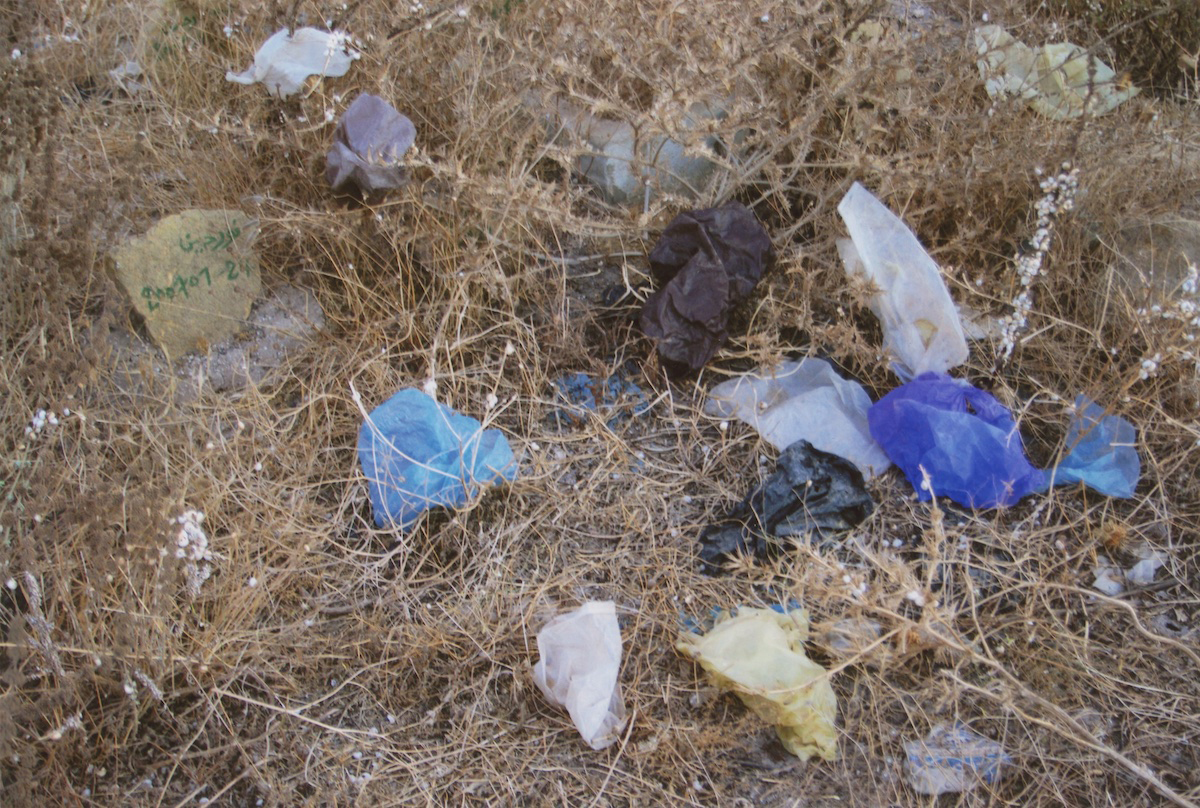C-print on aluminium, framed
5 parts, each 26.5 x 40 cm
Ed. 1 / 3
Kunstmuseum Liechtenstein, Vaduz
Criticism of the concept of cultural identity is a recognisable constant in the work of Latifa Echakhch. With the aid of a variety of artistic methods, she explores authenticity and authorship with questions of origin, unmasking prejudices and stereotypes in our society. Often deploying culturally coded aesthetic devices, she questions the loss of the symbolic meanings of objects. As in Still Life (Vanités) a–e, a series of five photographs that appear to depict random details of an overgrown piece of land strewn with litter. In places, so many small snails are huddled together that time appears to stand still. This still life makes us aware that this is a cemetery. In one of these pictures we see a small unremarkable stone with a date written on it. It is a gravestone and the only clue to the special place depicted in the images.
With the image of the Muslim cemetery at Mediouna in Morocco, where members of the artist's family are buried, she presents to our eyes the humus layers of life, while at the same time looking into our collective future. The question of what happens to us, our bodies, but also our souls, remains unanswered. One question that is answered, is how we treat our dead. Echakhch's interest in carelessly discarded objects and, as here, apparently rarely visited places draws attention to the inattentive, developing a quiet poetry in simplicity and transience.
Echakhch's biography – as a French woman with Moroccan roots living in Switzerland – plays a key role in this context and is often the starting point for her choice of topics. She studied in Grenoble, Paris and Lyon and designed the Swiss pavilion at the Venice Biennale in 2022.
Martina Morger
"In the field of political and historical links, I always take care not to be too frontal, too simplistic—the political context is more complex than that, and my rule as an artist is not to make any obvious politically oriented messages. It's a question of power and postures. I have no other goals but questioning the world around me."
Latifa Echakhch
